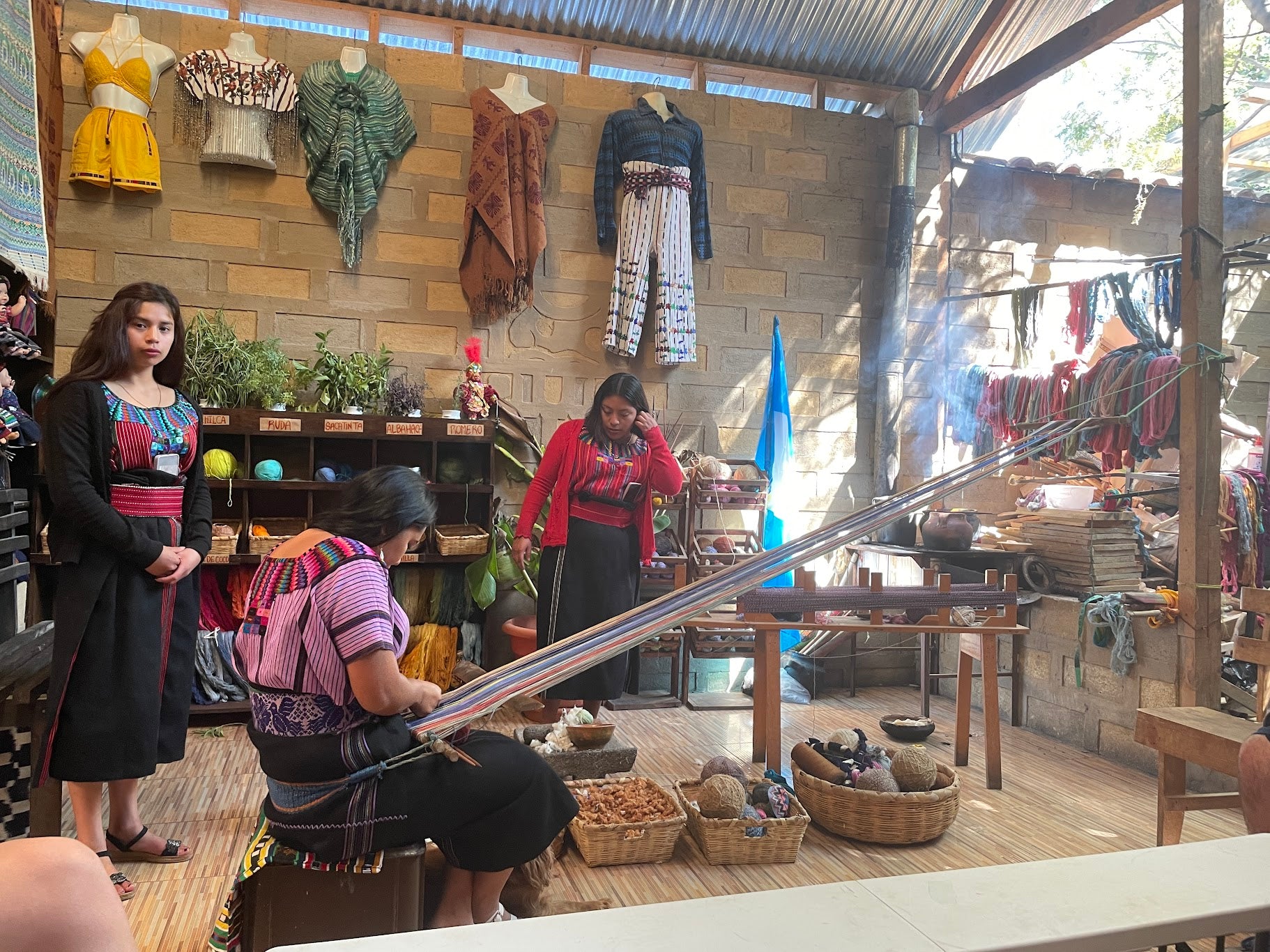
Nestled in the Guatemalan highlands, the communities around Lake Atitlán are renowned for their vibrant culture and exceptional craftsmanship. On a recent sourcing trip for our business, we explored some of the villages around the lake to discover the centuries-old Mayan art of weaving. Our goal was to understand not only the quality of these stunning handwoven hammocks, famous throughout Guatemala for their natural materials and exquisite designs, but also the rich heritage and stories behind them. One of our most memorable stops was Artesania Maya, a women’s weaving cooperative in San Juan La Laguna.

The Cooperative
Artesania Maya is a short walk from the boat docks of San Juan La Laguna, a colorful town on Lake Atitlán that has become a destination for both tourists and artisans. Stepping into the cooperative felt like entering a treasure trove; colourful, intricately woven textiles stretched across every wall.
We joined a demonstration upstairs, where women from the cooperative proudly shared their traditional weaving techniques and the cultural significance of their work.

Tradition
In Mayan communities, weaving has long been a rite of passage for girls, symbolizing family and community pride. Historically, a woman’s weaving skills demonstrated her readiness to contribute to the household and her community. Today, while social expectations have evolved, the tradition of weaving remains a vital means of preserving cultural identity.

The Process
Harvesting & Spinning:
The process begins in the fields, where local cotton is picked by hand. Once the seeds are removed, the cotton is manually spun up to seven times to achieve the necessary strength for weaving.

Dyeing:
Next, the thread is dyed using natural plant-based dyes. Rosemary produces lush greens, carrots yield rich oranges, and charcoal creates striking greys. Banana peels are used to set the dye, and we were amazed by the vibrant colours these natural ingredients create.

Weaving:
Finally, the prepared threads are woven using a backstrap loom, a technique that is both time-consuming and highly skilled. Simple pieces, such as scarves, can take a few days to make, while larger products, like blankets, can take several weeks.

Takeaways
Witnessing these artisans at work was deeply inspiring. Their commitment to quality and their dedication to preserving such a beautiful tradition were truly impressive. We brought back a few samples and are exploring ways to incorporate these natural-fibre hammocks and textiles into our product range. Stay tuned as we dream up what’s next!


